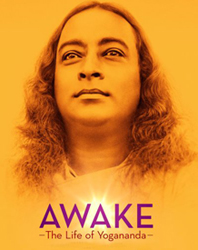Editing Tip #6: Narration for Biographies
Are you editing a biography? If so, consider a cutting-edge narration technique that helped The Most Dangerous Man in America get nominated for an Academy Award.
This film about Daniel Ellsberg, the man who exposed the Pentagon Papers, conveys terrific dramatic appeal because Ellsberg narrates the documentary himself.
Directors Judith Ehrlich and Rick Goldsmith scripted the first-person narration and then asked Ellsberg to record it. The results are breathtakingly intimate and dramatic.
What do you do if your film’s subject is dead?
That was the challenge facing the directors of Awake: The Life of Yogananda, an unconventional and gripping biography of an Indian mystic who brought yoga to the West in the 1920’s.
I met directors Lisa Leeman and Paolo di Florio at a recent film festival at the Esalen Institute. They said they realized that the so-called “voice of god narration” style is lifeless and out of fashion. So they decided to hire an actor with an Indian accent to narrate Yogananda’s story, in the first-person “I”. Having seen both a rough cut and the final film, I can attest that their choice has astonishingly increased their film’s dramatic appeal.
Look for Awake, which is currently opening in theaters.
Using your subject’s first-person narration amps your film’s drama so powerfully that I will be experimenting with this approach in my own work-in-progress, American Visionary: The Life of Barbara Marx Hubbard.
I hope you found this editing tip useful. For terrific savings on my story consulting services, consider joining our upcoming Inner Circle 8.0, beginning November 5, 2015. Email me today to receive an extension on the early-bird price: karen@newdocediting.com
Learn more at: Inner Circle 8.0
Here’s what filmmaker Tom Duncan says about the Inner Circle:
“The Inner Circle program was a very economical solution to identifying and tearing down the walls that held back my project. I was at a crossroads and close to hanging it up. Without the courage to create I wouldn’t be watching a tangible assembly cut today. Karen’s written and video analysis of my footage, along with tutorials, gave me the tools I needed to stand back and re-think my vision so I could make adjustments in a more objective way. I owe you my deepest gratitude.”
